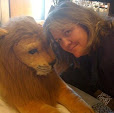One particularly interesting bit was where Fagan discussed the very cold years of 1560 to 1600. He writes that as
climatic conditions deteriorated, a lethal mix of misfortunes descended on a growing European population. Crops failed and cattle perished by diseases caused by abnormal weather. Famine followed famine bringing epidemics in their train, bread riots and general disorder brought fear and distrust. Witchcraft accusations soared, as people accused their neighbors of fabricating bad weather...Witchcraft accusations reached a height in England and France in the severe weather years of 1587 and 1588. Almost invariably, a frenzy of prosecutions coincided with the coldest and most difficult years of the Little Ice Age, when people demanded the eradication of the witches they held responsible for their misfortunes.
In reading about this particular time period, I can't help but note that this is the time of Shakespeare's youth and early manhood, when he was working as an actor and writing his plays and poetry, with Hamlet first produced in 1600-1601.

No comments:
Post a Comment